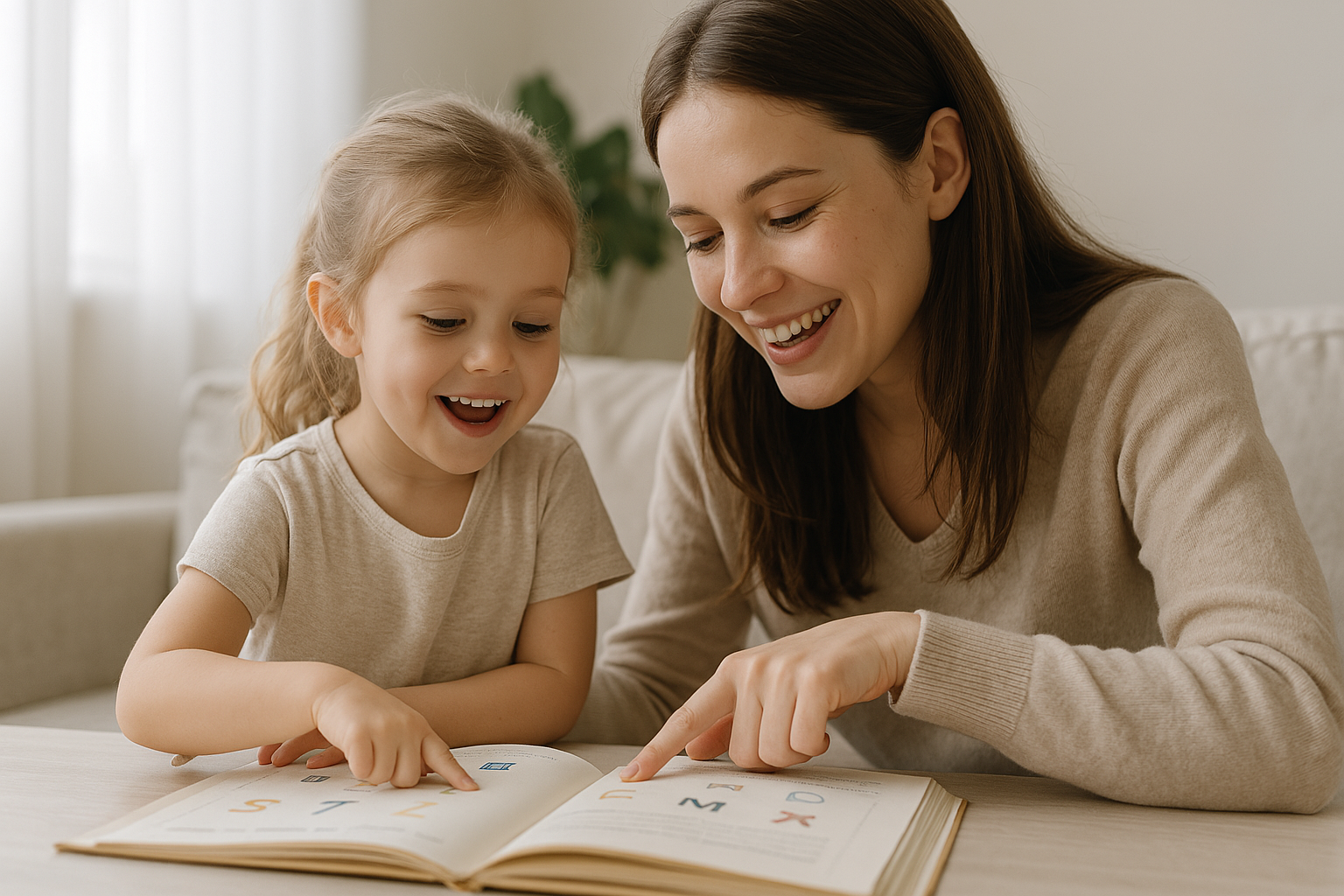Early childhood is a time of discovery, curiosity, and rapid growth. But behind every milestone — from the first words to learning how to count — lies something even more powerful: the emotional bond between a parent and child.
When children feel secure, loved, and emotionally connected to their caregivers, they are more open to learning. In fact, the parent-child relationship forms the foundation for all learning experiences that follow. Let’s explore how strong bonds support early learning — and how you can nurture them at home.
Why Bonding Matters in Early Childhood
Bonding is not just about hugs and smiles (though those are important too). It’s about building a safe emotional environment where children feel confident enough to explore, make mistakes, and try again.
Here’s why bonding is crucial:
- It creates emotional security, reducing anxiety and fear
- It supports brain development, especially in areas linked to memory, attention, and emotion
- It builds trust, making children more receptive to instruction and redirection
- It strengthens communication between parent and child
Children who feel connected to their caregivers are more likely to:
- Try new things without fear of failure
- Seek help when they need it
- Develop strong social and emotional skills
Bonding and Brain Development
In the first years of life, a child’s brain develops at an incredible pace. Every interaction with a caregiver — eye contact, cuddles, back-and-forth conversation — stimulates neural pathways that shape how a child thinks, feels, and learns.
Positive bonding experiences:
- Lower stress levels in children (cortisol regulation)
- Increase oxytocin, the “love hormone” that promotes attachment
- Strengthen the brain’s ability to regulate emotions and focus attention
A loving relationship is not just good for the heart — it’s good for the brain, too.
Everyday Moments That Build Strong Bonds
You don’t need expensive toys or complicated routines to create meaningful connections. In fact, bonding often happens in the smallest, most ordinary moments of the day.
Here are some examples:
Shared Routines
- Reading together before bed
- Preparing meals as a team
- Doing simple chores side by side
Quality Playtime
- Child-led play, where the parent follows the child’s lead
- Imaginative play and storytelling
- Outdoor exploration and nature walks
One-on-One Attention
- Eye contact while speaking
- Cuddles during quiet time
- Responding with warmth to questions and emotions
Emotional Presence
- Listening without distraction
- Acknowledging feelings (“I see you’re frustrated. I’m here to help.”)
- Staying calm during challenging behavior
These interactions tell your child:
“You matter. I see you. I enjoy being with you.”
That sense of being seen and valued lays the foundation for lifelong learning.
How Bonding Supports Cognitive Development
When children feel emotionally connected, their brains are better prepared to absorb information. Emotional safety allows for:
- Better focus and attention span
- Greater persistence with tasks
- More willingness to engage in problem-solving
- Higher motivation to learn new concepts
This is especially true in early learning areas like:
- Language development
- Early math and logic
- Motor skills and coordination
- Creative and imaginative play
Bonding makes learning feel safe and joyful, not stressful.
Tips for Strengthening the Bond During Learning Time
You can intentionally build connection during learning activities at home. Here’s how:
Be Present
Put away distractions (like your phone) during short activities. Even 15 minutes of focused attention can make a big impact.
Follow Their Interests
If your child loves animals, count toy animals together. If they enjoy music, turn math facts into songs. Let your bond shape the learning.
Celebrate Effort, Not Just Results
Say things like:
“I love how hard you’re trying!”
“You kept going even when it was tricky — I’m proud of you.”
This builds both confidence and connection.
Use Encouraging Touch
A gentle hand on the shoulder, a high-five, or a cuddle after reading a book strengthens both emotional and learning connections.
The Role of Trust in Learning
Children who trust their caregivers feel safer taking risks — and learning is full of risks: trying something new, getting something wrong, asking questions.
When a child knows they won’t be judged or criticized, they are more likely to:
- Stay curious
- Ask for help
- Explore and experiment
A secure bond creates a “safe base” from which children can venture out and learn about the world — knowing they can return to comfort when needed.
What About Busy Parents?
Bonding doesn’t require hours of extra time — it just needs intentional moments. Even if your schedule is tight, try:
- 5 minutes of focused play before dinner
- A loving goodbye routine in the morning
- A calming bedtime ritual
- Saying “I love you” often and with presence
It’s not about how much time — it’s about the quality of that time.
When Bonding Is Challenging
Some parents struggle with bonding — and that’s okay. Stress, fatigue, or past experiences can impact how we connect with our children.
If you feel distant or unsure:
- Start with small, predictable routines
- Use play as a bridge to connection
- Seek support from parenting groups, counselors, or pediatricians
Bonding is a skill that grows with time and intention — not something you have to get perfect.
Final Thoughts
At the heart of every learning experience is a relationship. And the strongest, most effective learning doesn’t happen through worksheets or flashcards — it happens through warmth, trust, and love.
By building a strong emotional bond with your child, you’re not only nurturing their heart — you’re unlocking their mind.
You are their first teacher.
Your love is their first lesson.
And that lesson will echo through everything they learn.
